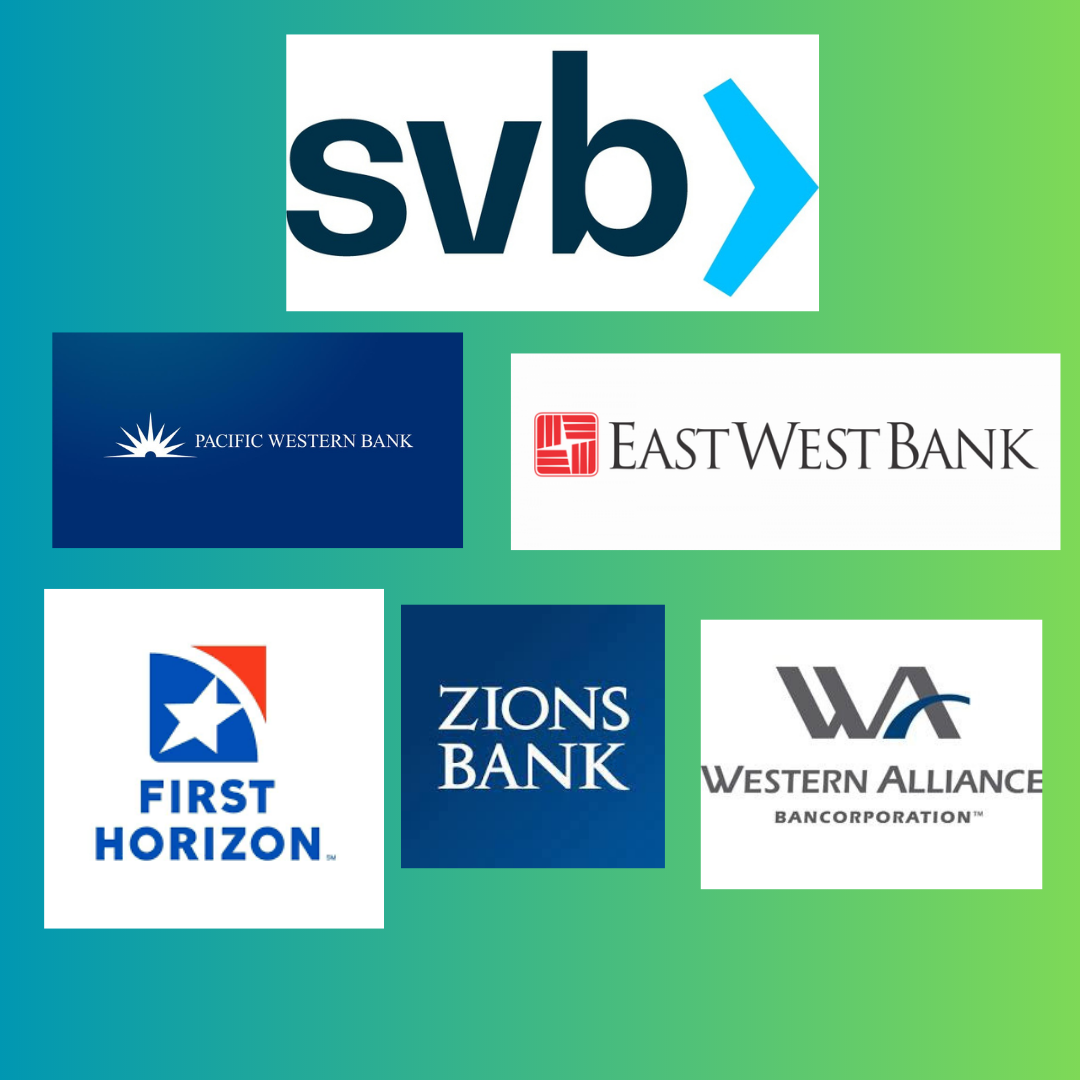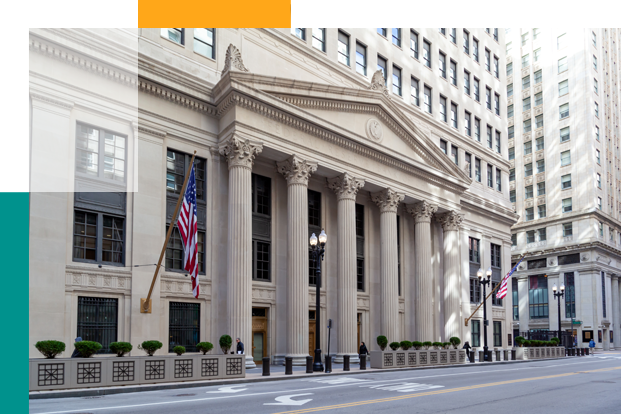Bank Failures: How Regional Banks are Turning a Crisis into an Opportunity

2023 has already seen 3 bank failures, and regional and mid-sized banks are grappling with a significant crisis of confidence. The headline-grabbing collapse of Silicon Valley Bank in March was the first warning sign of what some analysts are calling the first post-pandemic banking crisis.
On Friday, March 10, 2023, Silicon Valley Bank failed after a bank run. The collapse of SVB was the 3rd largest bank failure in US history, and the largest since the dark days of the 2008 crash.
| Bank | Event | Date |
|---|---|---|
| Silicon Valley Bank | Collapsed after a run on deposits | March 10 2023 |
| First Republic | Experienced a bank run, seized by regulators, and sold to JP Morgan | May 1 2023 |
| Signature Bank | Shuttered by the New York State Department of Financial Services and the Federal Deposit Insurance Corporation | March 10 2023 |
One fun fact that highlights the scale of the crisis: these three banks combined held more inflation-adjusted assets than the 25 banks that collapsed in the wake of the 2008 financial crisis- combined. In light of these developments, and uncertainty in the interest rate picture and global stability, many commercial real estate lenders are beginning to hold back.
Lending is anticipated to tighten further, affecting businesses and the broader economy. However, amid these difficulties, there is an opportunity for local lenders to employ innovative commercial real estate financing solutions to stay competitive and prosper in this unpredictable landscape.
Table of Contents
- Why are some regional and mid-sized banks failing?
- Mid-Sized Banks Face Interest Rate Threats
- How Some Local Lenders are Thriving During a CRE Slowdown
- Examples of Effective Digital Tools for Local Lenders
- What commercial real estate financing platforms are for lenders?
- Online commercial real estate loan origination platforms
- Will Regional and Mid-Sized Banks Collapse?
Why are some regional and mid-sized banks failing?
The recent collapse of three banks can be attributed to a few shared characteristics.
-These banks were highly vulnerable to rising interest rates.
Their investments, predominantly fixed at lower rates, lost value when the Federal Reserve raised rates. Consequently, the banks experienced dwindling revenues and mounting expenses, which destabilized their balance sheets.
-A significant portion of their clientele had deposits exceeding federal insurance limits.
This made depositors and clients of the banks more likely to withdraw funds quickly in response to perceived threats. This led to massive bank runs when the banks’ investment strategies faltered, with First Republic disclosing a loss of over half its deposits.
-The interconnected nature of the banks’ fates exacerbated concerns about deposit safety.
This prompted regulators and the financial system to intervene. Experts cited mismanagement as a primary issue, but also acknowledged regulatory shortcomings in detecting early warning signs and addressing them promptly.
Small Regional Banks’ Share Prices Fluctuate in Response to Bank Failures
The instability of Silicon Valley Bank has raised many questions about the stability of other regional banks. Investors are concerned that policymakers have not yet managed to extinguish a crisis that began with Silicon Valley Bank’s collapse. The S&P 500 index for larger regional bank shares fell close to 7%, led by an almost 11% decline in Utah’s Zions Bancorporation. Meanwhile, the S&P’s smaller regional bank benchmark dropped over 6%, with a significant 23% plunge in Los Angeles’ PacWest Bancorp.
Decrease in Lending and Accumulation of Cash Reserves
Small regional banks at the center of the crisis are likely reducing lending and building cash reserves and highly liquid investments. This suggests that the modest downturn in business lending that started in March will probably worsen. The Federal Reserve’s weekly numbers on overall business loans outstanding have dropped 2% since their March peak, with business loans from smaller banks down a steeper 4.2%.
Interested in learning more about the types of commercial real estate loans in 2023? Check out this resource from the Finance Lobby CRE Insights blog to learn everything you need to know.
Sign up for our monthly newsletter and get breaking commercial real estate financing news hot off the presses. Sign up at the bottom of this page.
Mid-Sized Banks Face Interest Rate Threats
California-based lender PacWest is considering a potential sale as its shares fell more than 50%, followed by an 80% bounce after announcing it had been approached by potential partners and investors. Over the past three months, the KBW Regional Banking index has lost 35% due to the collapse of Silicon Valley Bank, Signature, and First Republic since March. These failures have heightened investor concerns about the health of regional banks.
As a result, share prices of small banks have been unstable. The S&P 500 regional bank index shares fell more than 7%, while the S&P’s smaller regional bank benchmark plunged over 6%. This led to a downturn in business lending, which is expected to worsen. The Federal Reserve’s weekly numbers on overall business loans outstanding have dropped 2% since their March peak, with business loans from smaller banks down a more pronounced 4.2%.
Moreover, First Horizon and TD Bank have terminated a planned merger due to regulatory obstacles. The Memphis-based bank’s share price plummeted 33% following this announcement. The stock prices of other large regional banks, such as Western Alliance Bancorporation, First Horizon Corp, and East West Bancorp, have also significantly dropped. The 2023 bank failures have raised concerns about a system-wide banking contagion.
Banks already had cautious lending standards before the panic, with a closely watched measure of bank lending standards by the Fed showing that lending standards were approaching recession-related levels at the end of last year. If the data indicates lending is likely to plummet, it might prevent the Federal Open Market Committee from delivering the widely expected quarter-point increase. 2023 bank failures come on top of an economy in transition, with post-pandemic woes, inflation, and uncertainty in energy markets and geopolitically.
Looking for commercial loan rates? Head over to our CRE Insights blog for a step-by-step guide showing you how to find current commercial loan rates– and use this handy commercial mortgage rate tool, only at Finance Lobby.
How Some Local Lenders are Thriving During a Time of Bank Failures
In a few words: embracing the latest and greatest digital tools before the big banks- and before the competition, regardless of the size of the operation. Digital platforms for property valuation, title verification, and deal matchmaking enable local lenders to identify and secure lucrative opportunities with ease. Embracing these innovative solutions not only reduces operational costs but also empowers local lenders to stay competitive in the rapidly evolving commercial real estate landscape.
Benefits of Using Digital Tools for Local Lenders
There are several benefits to using digital tools for local lenders, including:
Increased efficiency
Newly adopted technology can streamline various aspects of the lending process, from loan origination to underwriting and servicing. This saves time and reduces the potential for errors, ultimately leading to better outcomes for lenders and borrowers.
Greater access to resources and information
Digital solutions can give local lenders access to a wealth of resources and information that might otherwise be difficult to obtain. This helps level the playing field and ensures that these smaller institutions can compete with larger banks and financial institutions.
Improved customer experience
They can also enhance the overall customer experience by making it easier for borrowers to apply for loans, access their account information, and communicate with their lender. This can lead to higher levels of customer satisfaction and increased loyalty.
Examples of Effective Digital Tools for Local Lenders
Commercial Real Estate Financing Platforms
Commercial real estate financing platforms are digital marketplaces that connect borrowers with lenders, streamlining the process of securing loans for commercial properties. These platforms offer a more efficient and transparent alternative to traditional financing methods, making it easier for local lenders to find and fund promising real estate projects.
What commercial real estate financing platforms are for lenders?
Finance Lobby, the nation’s largest commercial real estate financing marketplace, offers lenders of all sizes the opportunity to keep their loan book full and buoy their holdings against a down commercial real estate market. Finance Lobby leverages technology to match commercial real estate borrowers with suitable lenders based on their specific needs, loan requirements, and property types.
Online commercial real estate loan origination platforms
These platforms can help streamline the loan origination process, making it faster and easier for borrowers to apply for loans and for lenders to process and approve applications. Finance Lobby is currently the nation’s largest broker-lender financing marketplace, with the largest community of financing-oriented brokers and lenders anywhere.
Digital banking services
Many local lenders now offer digital banking services, such as online and mobile banking, which can help improve the customer experience and make it more convenient for borrowers to manage their accounts and make payments.
Data analytics for risk management
Digital tools that utilize data analytics can help local lenders better assess and manage risk, leading to more informed lending decisions and potentially lower default rates.
Will Regional and Mid-Sized Banks Collapse?
Federal Reserve Chairman Jerome Powell emphasized his conviction that the recent failure of three major banks within a six-week span is likely to prompt other financial institutions to restrict lending. This, in turn, would aid the Fed in its ongoing battle against inflation. The central bank’s accelerated rate increases over the previous year have begun to decelerate the economy, with numerous experts predicting a recession either late in 2023 or early 2024.
Powell concurred with the findings of a Federal Reserve report released last week, which attributed the downfall of Silicon Valley Bank to supervisory shortcomings and called for more stringent regulations within the banking sector. 2023’s bank failures have the potential to cripple the American and global economy, so we’re likely to see at least some response from regulators to stem the tide.
JPMorgan forecasts that bank stocks will remain under pressure due to a combination of regulatory and economic uncertainties. Their analysts noted that the primary regulatory concerns would involve the extent to which banks need to bolster their capital, liquidity, and debt. While these measures would enhance their long-term stability, they could negatively impact earnings per share in the short term.
Finance Lobby is the nation’s largest community of brokers and lenders, connecting our users with one goal – financing commercial real estate.
New members have access to 2 weeks of free deals by signing up on this page.


